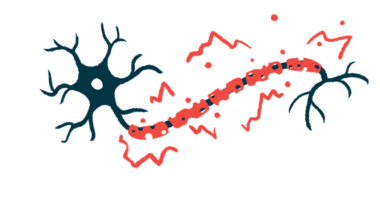Surgery found successful for some MS patients with facial pain
More invasive procedure works better, but linked to complications

Surgical procedures to treat trigeminal neuralgia — a type of nerve damage that causes facial pain — may be successful for some people with multiple sclerosis (MS) who fail to respond to medications, a new study found.
A more invasive procedure called microvascular decompression, or MVD, had slightly higher success rates than less invasive approaches for treating facial pain, according to the study. But it also was more often associated with major complications.
Thus, per the researchers’ recommendation, MVD should only be considered for certain subsets of patients.
“A good or excellent outcome [was found for] 71% of patients treated with MVD. However, major complications were more frequent and generally more serious after MVD” than a less-invasive surgery, the team wrote.
The study, “Efficacy of surgical treatment in patients with trigeminal neuralgia secondary to multiple sclerosis: A prospective study of 18 cases with evaluation of outcome and complications by independent evaluators,” was published in Cephalalgia.
Study looked at results of surgery in 18 patients with facial pain
Neuropathic pain, caused by damage to the nerves that carry signals between the central nervous system — the brain and spinal cord — and the rest of the body, is a common symptom of MS.
Trigeminal neuralgia refers to a type of neuropathic pain caused by damage to the trigeminal nerve, which is responsible for transmitting signals from the face to the brain. The condition results in short bouts of electric shock-like pain in the face that can be triggered by everyday activities such as eating, brushing teeth, or talking.
It usually occurs when the nerve is being compressed by an artery or vein — called classical trigeminal neuralgia — but also can occur without a known cause (idiopathic) or secondarily to diseases such as MS that damage the nervous system.
People with MS have about a 20 times greater risk of trigeminal neuralgia relative to the general population, with an estimated 3% of patients experiencing the painful symptom.
Classical or idiopathic trigeminal neuralgia can be treated with medications or surgery, but the guidelines for treating MS-associated trigeminal neuralgia have not been well established. Available data indicate that medications are poorly tolerated in MS patients, and can possibly exacerbate existing symptoms of the neurodegenerative disorder.
To learn more about the safety and effectiveness of surgical treatment, a team or researchers collected data on 18 MS patients with facial pain. The 11 women and seven men were treated at the Danish Headache Center, in Denmark, between May 2012 and October 2019.
All patients, who had a mean age of 54.6, had either not tolerated or had a poor response to medications for trigeminal neuralgia prior to undergoing surgery.
Overall, seven patients showed signs of contact between a blood vessel and the trigeminal nerve — called neurovascular contact (NVC). They were treated with a technique called microvascular decompression or MVD, in which a hole is drilled in the skull to expose the trigeminal nerve and the problematic blood vessel is moved away.
Two of these seven patients achieved an excellent outcome a year after surgery, defined as complete pain relief without medication. Both showed signs of morphological changes with their NVC, defined as compression, displacement, or wasting of the trigeminal nerve resulting from its contact with the blood vessel.
A good outcome, or partial pain relief with medication, was seen in three people, and one person had no pain relief and was considered a treatment failure. The remaining patient died due to complications related to the surgery.
In addition to the patient with the fatal outcome, two other patients experienced major complications and two had minor complications. These included temporary partial numbness, known as hypoesthesia, and hearing impairment.
The remaining 11 people in the study were treated with percutaneous procedures, or more minimally invasive procedures that involve a small needle puncture instead of openly exposing the trigeminal nerve.
In this group, one person had an excellent outcome, five had a good outcome, one had a poor outcome, and four were considered treatment failures.
Four people who underwent a percutaneous procedure experienced persistent or transient hypoesthesia, which was considered a major complication in three cases.
Overall, the findings indicate that while a greater percentage of patients undergoing MVD (71%) achieved a good or excellent outcome compared with percutaneous procedures (64%), major and serious complications are more likely with the invasive procedure.
We propose that [non-invasive] procedures should be first-choice in the majority of patients.
Moreover, MVD was less effective for MS-associated facial pain than has been seen in patients with trigeminal neuralgia due to other causes, the researchers noted.
“We propose that percutaneous procedures should be first-choice in the majority of patients and that MVD should only be considered in patients with NVC with morphological changes,” the researchers concluded.







